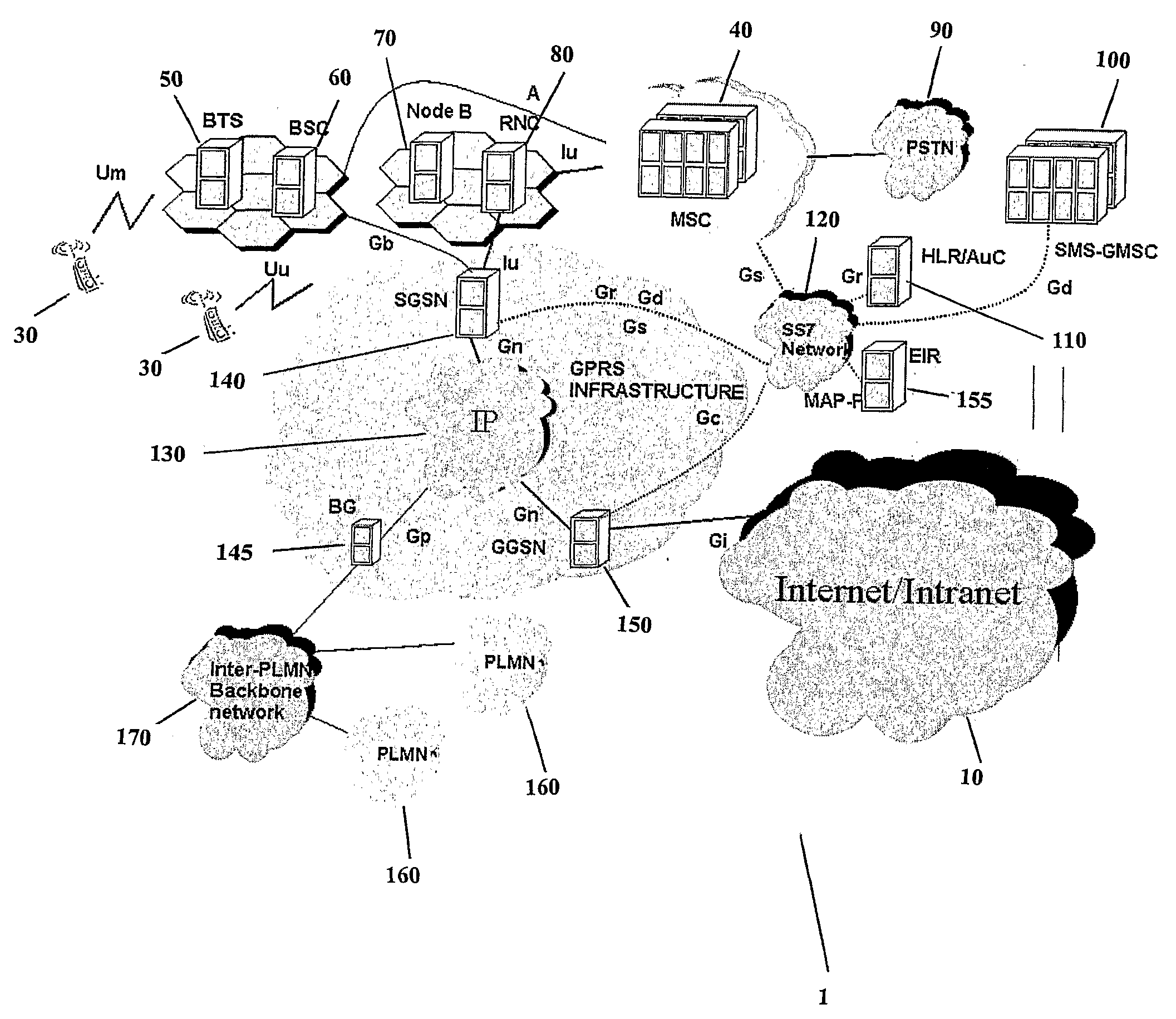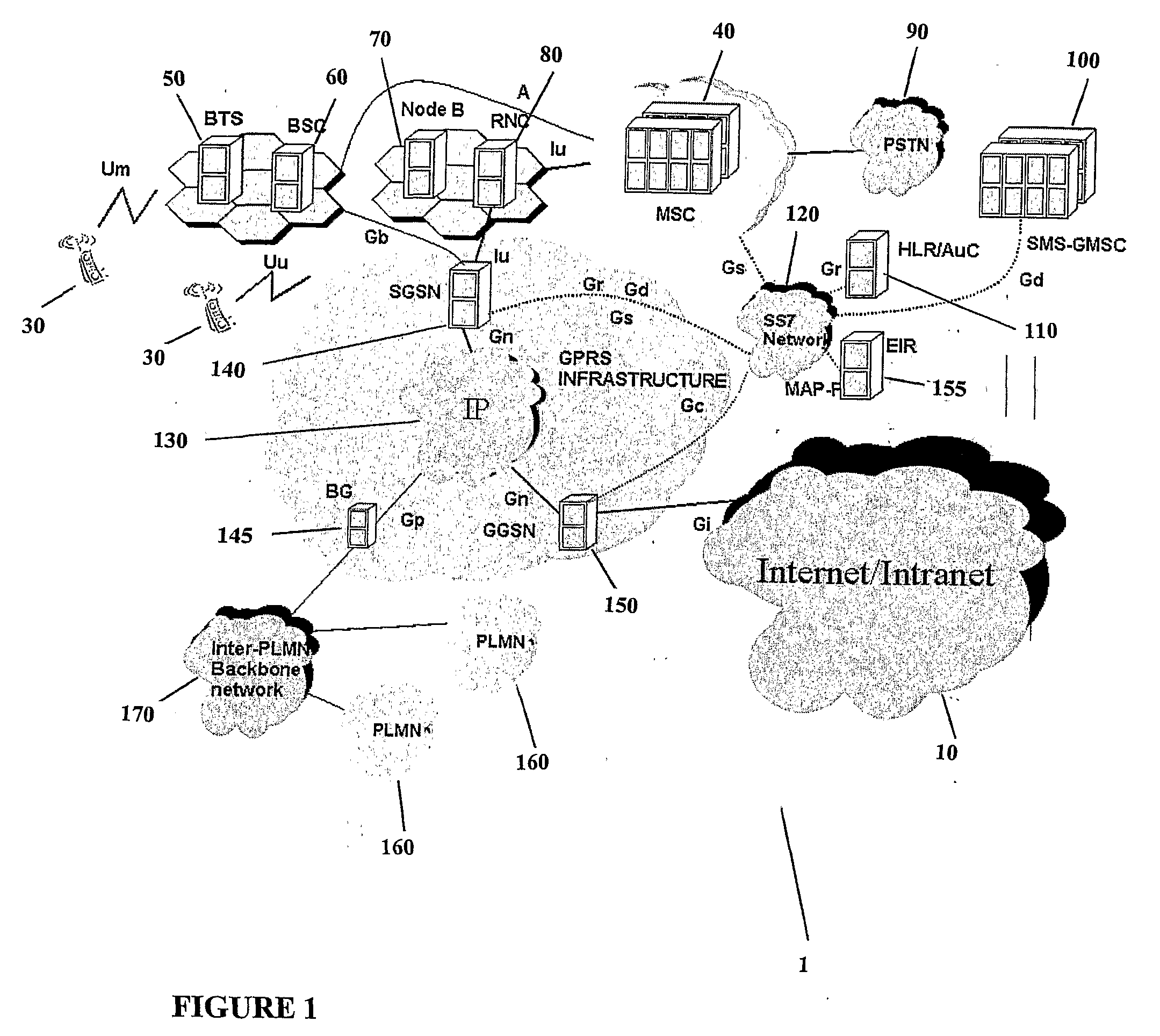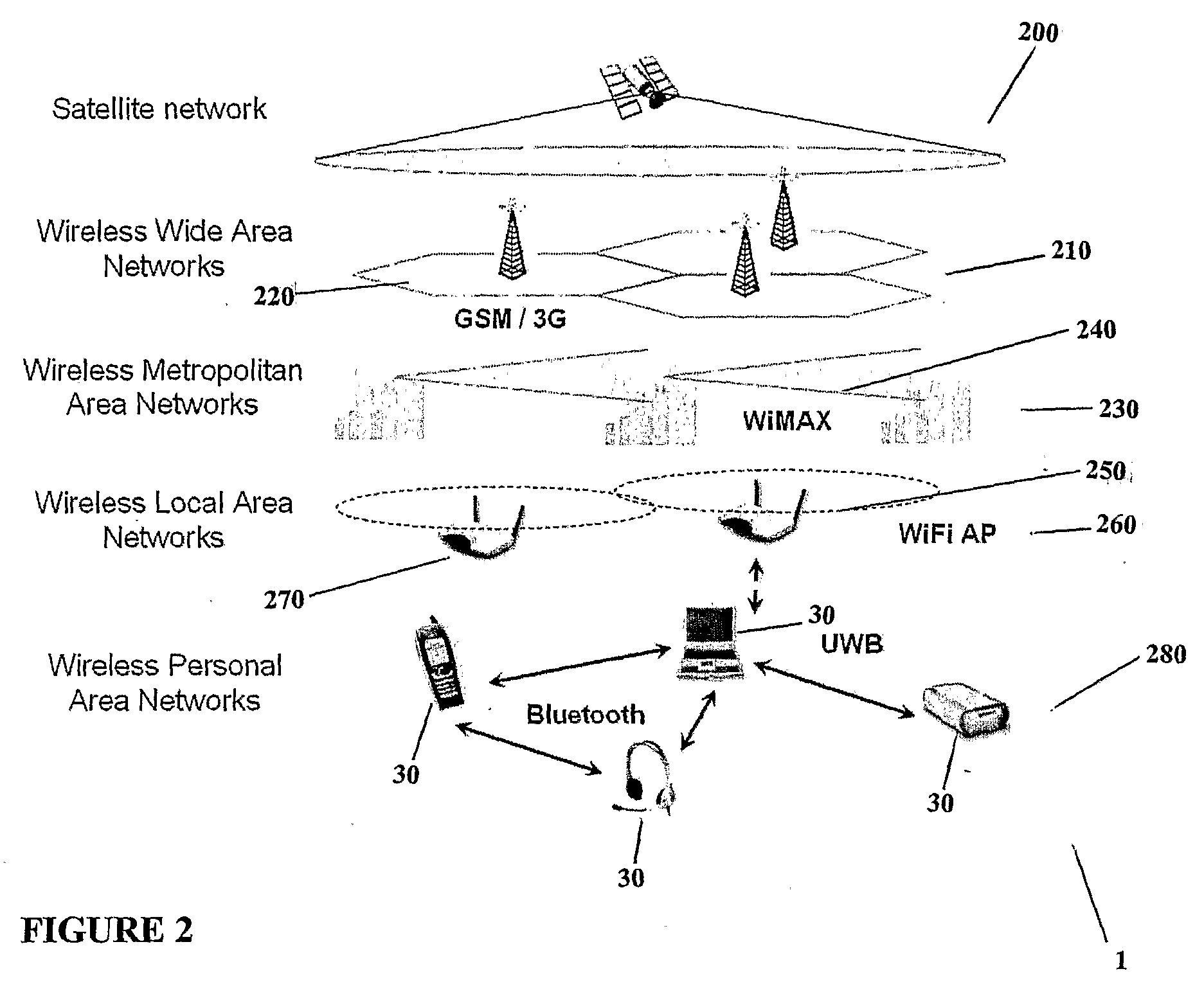1. The network infrastructure of a
wireless network is simpler, with respect to the number of nodes between a mobile networked device and a first wired link in the network.
2. The status of a
wireless network changes frequently, due to several factors, including: environmental conditions (e.g. downtown
urban area vs.
suburban area with different
signal attenuation and propagation);
mobile device location (e.g. close to a large power supply field vs. in a large open area); network traffic at a given time, adjacent user usage of the network; and the
base station backbone (e.g.
fiber vs.
copper backbon
3.
Software applications are generally not designed for
wireless network environments that include frequent status variation. Therefore, operating such applications over a
wireless network may worsen the network status by adding additional traffic, and thereby increasing the overall
delay and latency of the network, which, in turn, may
impact the experiences of other mobile device users.
However, use of these different types of applications results in different
data traffic types traversing the network, each
data type having different delivery (time) requirements and different error tolerances (in
time sensitive vs. error sensitive spectrums of applications).
TCP does provide congestion control features which occur on wired networks but the protocol doesn't distinguish a wired network from a wireless network.
However, use of TCP / IP over wireless networks may be problematic.
For example, delays in the wireless network may be caused by
signal attenuation (not by congestion), causing TCP / IP to actually reduce performance of a wireless network.
Therefore, what is lacking in the prior art is the awareness and involvement of the networked (for example, mobile) device in the network by enabling the networked device to act as an intelligent and integrated element (similar to a
router / switch) within the network.
1. TCP / IP inefficiency over wireless networks;
2. the lack of knowledge of wireless networks within the protocol layer of networked devices;
3. VoIP and the standard streaming video control protocol, known as the Real-Time
Transport Control Protocol (RTCP) inefficiency over wireless networks;
4. the inability to dynamically distinguish between the different types of data and meet their real-time requirements in a mixed network, without relying on IP header information;
5. the inability of a mobile device in a mixed network to be aware of the types of the available networks and the status of each network at any given time and to feedback status information to the network as part of the data protocol delivery without requiring any extra transaction;
6. the inability of a mobile device in a mixed network to predict the
signal to
noise ratio (SNR), outside the
physical layer and below the
IP layer, of the wireless network and to make decisions for appropriate traffic types, such as forwarding / redirecting traffic through different networks, or using two types of networks simultaneously based on their conditions and network policy;
7. the inability to provide local
jitter handling within a mobile device in the layer below IP; and
8. the inability to provide mobile
data traffic prioritization, queuing and scheduling within a mobile device, based on the network condition and policy, or through either
DNA / fingerprints set by a catalogue ID or determining the application type.
These solutions include using TCP / IP spoofing and tunnelling techniques that are inefficient and often cause yet more unnecessary data to be sent over the wireless networks, and produce extra
processing overhead for the network device.
In a wireless network, the failure to receive an acknowledgment within a given time is usually not due to congestion but due to instant network delays,
signal strength drop, or latency variation.
In such situations a TCP / IP node will slow down the transmission and take some time before returning to its normal speed of operation.
During this time the
throughput over the same bandwidth will be reduced because of the unnecessarily slowed transmission.
Another problem caused by TCP / IP is that it was designed for the low
bit error rate link environment of a wired network and therefore if one packet within a
stream of packets is lost then all packets are resent.
All of these communications create extra overhead and add
delay to a wireless network.
To solve these problems there have been several inefficient solutions, which focus on a
single type of data, using applications such as Internet Explorer.
To date, none of these approaches have been entirely adequate.
Although this method reduces the amount of data travelling over the network, which indirectly results in greater use of bandwidth, it does not eliminate TCP / IP inefficiencies over wireless networks, as it is the wireless
delay variations that cause the strange behaviour of TCP / IP.
This technique reduces the need for transferring frequently requested queries but it does not address TCP / IP inefficiency directly.
The disadvantages of this technique include:(i) Process consumption.
This means that more
processing time will be required for a small mobile device and further delays will be caused by the tunnelling technique.
Also, if the compression or
encryption happened in the layer 4 (above TCP and UDP
layers and below the
application layer) then the proxy-type may not be able to distinguish the type of application.(ii) Increased network traffic.
This “solution” does not solve the TCP inefficiency issues created by the wireless network's latency variation, as TCP data has already been created but is wrapped around a different protocol for transmission.
However, if the network has high latency, TCP would still result in strange behaviour due to lack of receiving responses in a timely fashion.
This approach also increases the traffic over the wireless network by adding unnecessary data and also changes the mechanism of new
packet switched networks to that of the old legacy circuit switch networks.
This results in a lower network capacity and inefficient use of the network.
For time-sensitive applications, this results in additional delay caused by the movement from one AP or domain to another.
A problem in the art is in resuming an application session and this has not been specified in any standard.
It has been suggested that the
Mobile IP standard within a network could solve the problem, but the amount of signalling traffic within
Mobile IP creates too much unnecessary traffic.
 Login to View More
Login to View More  Login to View More
Login to View More 


